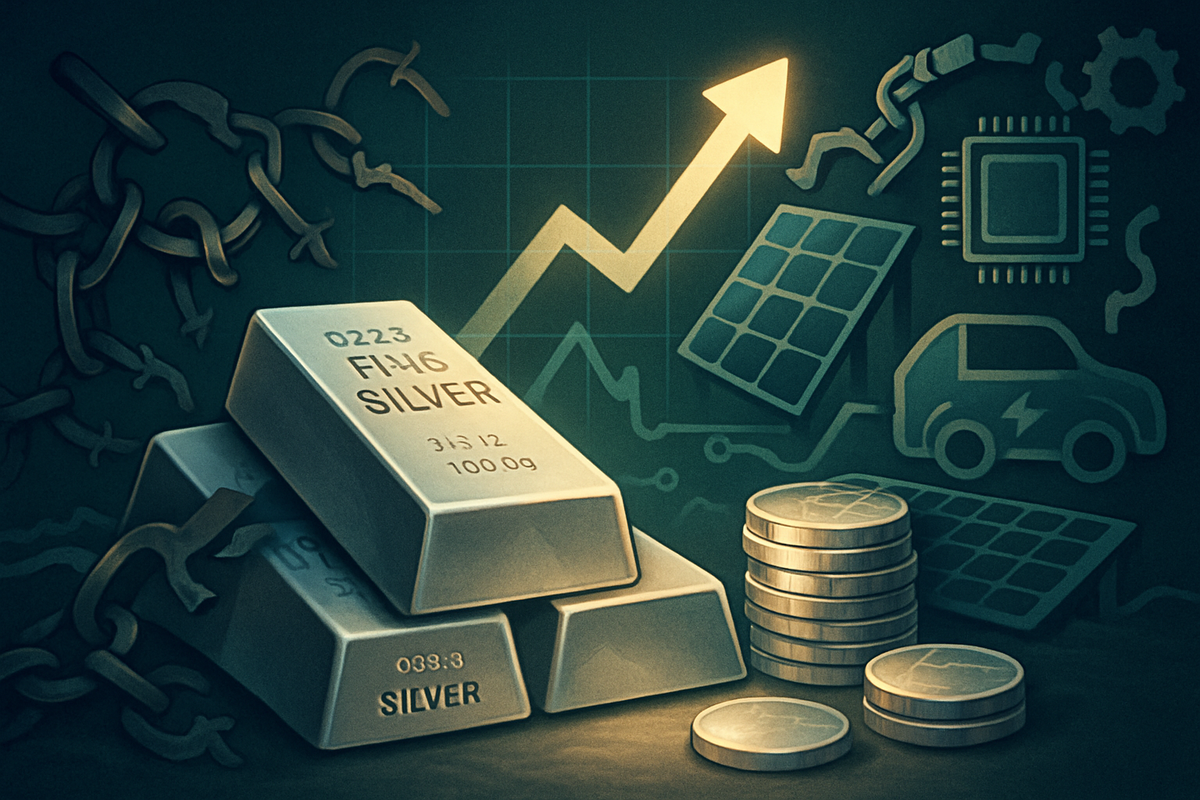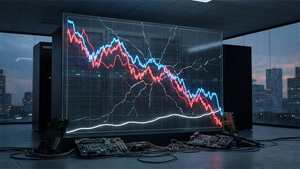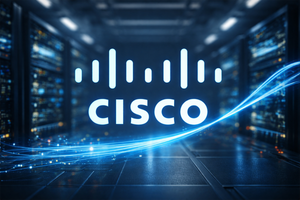
In a stunning display of market momentum, silver prices have breached the psychological $50 per ounce barrier, reaching unprecedented highs on October 14, 2025. This historic rally has ignited renewed interest in the often-overlooked precious metal, with Nitesh Shah, Head of Commodities & Macroeconomic Research at WisdomTree (NYSEARCA: WT), boldly predicting that silver could climb even higher, targeting $56 per ounce by September 2026. Shah's bullish outlook is firmly rooted in a detailed analysis of persistent global supply chain disruptions and the long-term structural deficits plaguing the silver market.
This significant surge in silver prices, which saw spot silver hit an all-time high of $53.62 per ounce overnight before settling around $50.68 per ounce on October 14, 2025, reflects a remarkable 70% year-to-date gain. It signals a profound shift in market dynamics, driven by a complex interplay of robust industrial demand, safe-haven buying amidst global uncertainties, and a critically constrained supply landscape that shows no signs of immediate improvement.
Shah's Bullish Forecast and the Supply Chain Conundrum
Shah's forecast, an extension of his earlier April 2025 'bull' scenario, posits that this current surge is fundamentally different from past speculative bubbles. Unlike the market manipulations of the 1980s, the present rally is propelled by a confluence of robust and diverse demand drivers, particularly from industrial sectors. The core of Shah's argument lies in the severe and seemingly intractable nature of silver's supply chain issues, which he describes as "a mess and won't improve anytime soon."
A significant challenge stems from the fact that approximately 70% of silver is produced as a byproduct of mining other metals like copper, lead, and zinc. This inherent characteristic means that even substantial increases in silver prices do not directly incentivize miners to boost silver-focused extraction, thus creating a supply inelasticity that exacerbates shortages. Compounding this, the global silver market has endured structural supply deficits for several consecutive years, a trend projected to persist through 2025 and 2026, leading to a cumulative shortfall approaching 800 million ounces over the past five years.
Further constraining supply are chronic underinvestment in exploration and development over the last decade, coupled with declining ore grades at existing mines. The arduous 7-10 year timeline required to bring new mines online ensures that a swift supply response to current demand is highly improbable. Adding to the complexity, geopolitical tensions and trade factors, such as the specter of U.S. tariffs on precious metals, further complicate market dynamics and contribute to price volatility. As of October 14, 2025, spot silver has indeed validated parts of Shah's earlier predictions, hitting an all-time high of $53.62 per ounce overnight before settling around $50.68 per ounce, marking a remarkable 70% year-to-date gain.
Corporate Fortunes: Winners and Losers in a $50+ Silver Market
The dramatic ascent of silver prices above $50 per ounce creates a stark division between beneficiaries and those facing significant headwinds in the financial markets. For primary silver mining companies and precious metals streamers, this surge represents a substantial windfall. Companies like Fresnillo PLC (LSE: FRES), the world's largest primary silver producer, Pan American Silver (NASDAQ: PAAS, TSX: PAAS), with its extensive operations across the Americas, and First Majestic Silver (NYSE: AG, TSX: AG), a pure-play silver miner, are poised for significantly enhanced revenues and expanded profit margins. Their all-in sustaining costs (AISC) often lie well below the $20 per ounce mark, meaning a $50+ silver price translates directly into robust profitability and stronger cash flows, which can be reinvested into exploration or returned to shareholders. Similarly, Wheaton Precious Metals (NYSE: WPM, TSX: WPM), operating on a streaming model, benefits immensely by acquiring silver at fixed, low costs (e.g., $5.75 per ounce) while selling at market highs, ensuring consistent and lucrative margins. Other notable beneficiaries include MAG Silver (NYSEAMERICAN: MAG, TSX: MAG), Coeur Mining (NYSE: CDE), Buenaventura Mining Company (NYSE: BVN), Hecla Mining Co. (NYSE: HL), and Endeavour Silver (NYSE: EXK, TSX: EDR).
Conversely, industrial sectors heavily reliant on silver as a critical input are bracing for significant cost pressures. The solar photovoltaic (PV) industry, the largest industrial consumer of silver, will feel a pronounced squeeze. Manufacturers such as First Solar, Inc. (NASDAQ: FSLR) and other global PV module producers are seeing silver's share of module production costs escalate, threatening already tight profit margins in a competitive landscape. This necessitates intensified 'thrifting' efforts to reduce silver content per cell and accelerated research into alternative materials like copper, though viable substitutes for all applications remain elusive.
The electronics sector, encompassing giants like Apple Inc. (NASDAQ: AAPL), Samsung Electronics Co., Ltd. (KRX: 005930), and semiconductor leaders such as Intel Corporation (NASDAQ: INTC) and Taiwan Semiconductor Manufacturing Company Limited (NYSE: TSM), also faces mounting input costs. Silver's unparalleled electrical conductivity makes it indispensable for components in smartphones, computers, 5G infrastructure, and burgeoning AI server farms, which demand significantly more silver. These companies will likely experience margin compression and will be forced to explore material reduction strategies and robust hedging to mitigate price volatility.
Similarly, the rapidly expanding electric vehicle (EV) industry, with key players like Tesla, Inc. (NASDAQ: TSLA), confronts rising production expenses. EVs contain substantially more silver than traditional vehicles, utilized in critical systems from battery management to advanced driver assistance. This escalating cost burden could impact EV manufacturers' profitability and pricing strategies in an already fiercely competitive market, potentially accelerating innovation in optimizing silver usage in automotive electronics.
Wider Significance: A Metal at the Crossroads of Geopolitics and Green Tech
The current silver rally transcends mere commodity speculation, fitting squarely into broader, transformative industry trends. The metal's dual identity as both a safe-haven asset and a critical industrial commodity is driving its unprecedented ascent. In the context of global geopolitical instability—including renewed U.S.-China trade tensions, ongoing conflicts, and persistent inflation concerns—investors are flocking to precious metals as a hedge against currency debasement and economic uncertainty. This 'flight to safety' is amplified by shifts in global monetary policy, expectations of interest rate cuts, and a growing trend of de-dollarization, all contributing to strong investment flows into precious metal ETPs and central bank buying. The London silver market, in particular, is experiencing a "classic short squeeze scenario," indicative of a severe physical shortage.
Crucially, this event underscores silver's indispensable role in the ongoing global energy transition and technological advancement. Industrial demand, accounting for over half of global consumption, is not just robust but accelerating. Silver is a cornerstone of green energy technologies, notably in solar photovoltaic (PV) panels, where consumption is projected to exceed 250 million ounces annually by 2027. Its use in electric vehicles (EVs), electronics, and the build-out of 5G networks further solidifies its critical importance. This industrial demand exhibits price inelasticity, meaning consumption remains strong even as prices climb, reinforcing the structural deficit.
The growing recognition of silver's strategic value has led to its consideration for designation as a critical mineral, a status expected to be finalized before the end of 2025. Such a designation would elevate its strategic importance in national industrial and defense planning, potentially leading to government support for domestic supply chains and further demand. Historically, silver has seen dramatic price surges, such as the Hunt brothers' attempt to corner the market in the late 1970s. However, Nitesh Shah's analysis emphasizes that the current rally is fundamentally different, driven by genuine, diverse demand rather than speculative manipulation, suggesting a more sustainable underlying strength.
What Comes Next: Navigating Volatility and Strategic Shifts
Looking ahead, the silver market is likely to remain highly dynamic, presenting both opportunities and challenges. In the short term, the market may experience continued volatility as speculative interest intertwines with fundamental supply-demand imbalances. However, the long-term outlook, particularly through 2026 as projected by Nitesh Shah, suggests a sustained upward trajectory for silver prices, fueled by the enduring structural deficits and relentless industrial demand. The current 'short squeeze' in the physical market further indicates that immediate price pressures are unlikely to abate quickly.
For industrial consumers, strategic pivots will be essential. Companies in the solar, electronics, and automotive sectors will need to intensify their research and development into silver-thrifting technologies and, where feasible, explore alternative materials. Investment in closed-loop recycling systems for silver from end-of-life products will also become a critical component of supply security and cost management. Furthermore, robust hedging strategies will be paramount for mitigating price volatility and securing supply contracts.
Market opportunities will emerge for innovators in silver recycling and for companies developing efficient, cost-effective silver substitutes. For investors, the silver mining sector, especially those with low all-in sustaining costs and strong balance sheets, could continue to offer significant upside. The potential designation of silver as a critical mineral could also unlock new avenues for government support and strategic stockpiling, further influencing its market trajectory. The ongoing energy transition and the relentless pace of technological innovation are structural tailwinds that are set to underpin silver demand for the foreseeable future.
Wrap-Up: A New Era for Silver's Significance
In summary, WisdomTree's Nitesh Shah's prediction of silver prices climbing to $56 per ounce by September 2026 is gaining significant traction, underscored by the metal's recent breach of the $50 mark. This historic rally is not merely speculative but is fundamentally driven by a confluence of severe, long-term supply chain issues, persistent structural deficits, and burgeoning industrial demand from critical sectors like solar, electronics, and electric vehicles. While silver miners and streamers stand to benefit immensely from this price surge, industrial consumers face escalating costs and the urgent need for strategic adaptations in material usage and supply chain management.
Moving forward, the silver market is poised for continued strength, supported by its dual role as a safe-haven asset amid global uncertainties and an indispensable component of the green energy and digital revolutions. Investors should closely monitor global economic indicators, geopolitical developments, and the progress of silver-intensive industries. The potential critical mineral designation for silver will also be a key factor to watch, as it could introduce new policy dimensions to its supply and demand dynamics. The lasting impact of this event will likely be a re-evaluation of silver's strategic importance, solidifying its position as a pivotal commodity in the 21st century economy.
This content is intended for informational purposes only and is not financial advice






